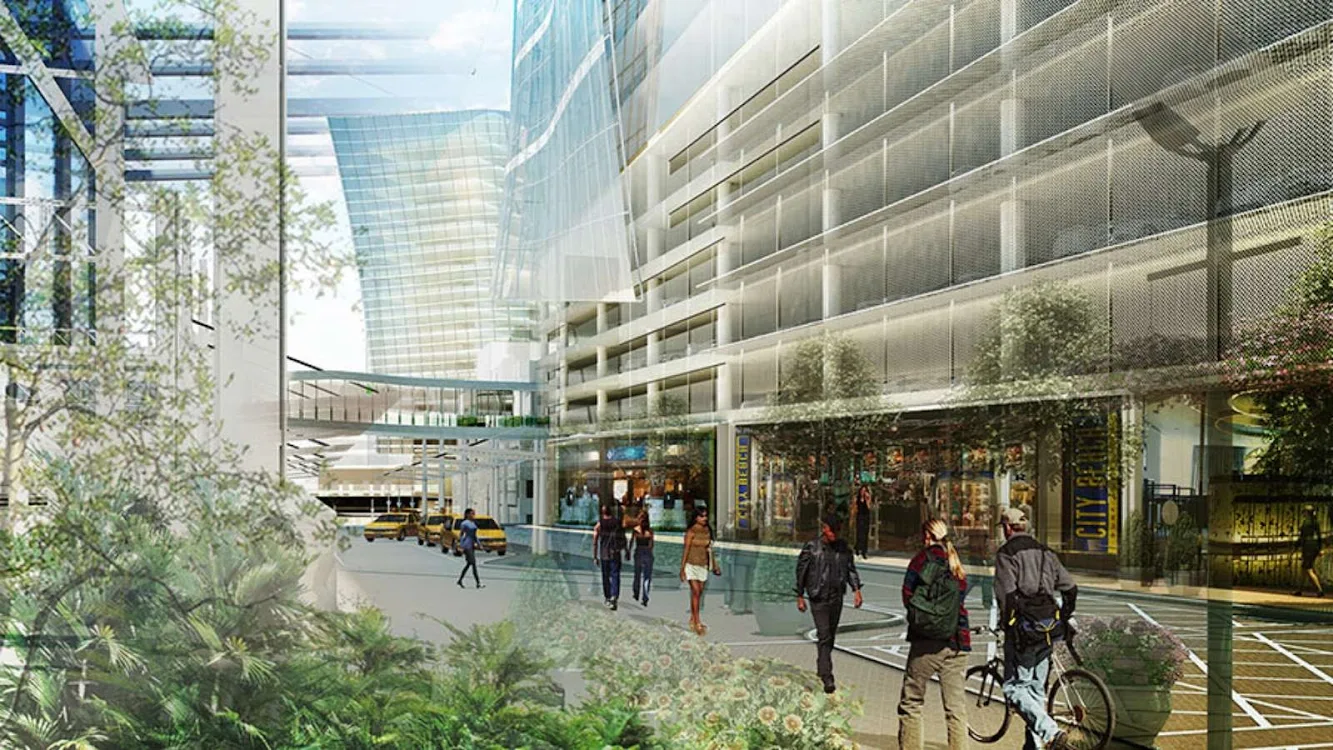
Stamford’s Transportation Center is located on the wrong side of the eight-lane Interstate 95 to take advantage of the density of the city’s downtown. A $500 million redevelopment plan aims to change that.

A competition-winning scheme, designed by New York–based Studio V Architecture, would create a multi-modal neighborhood surrounding the center, which is the region’s second-busiest train station after Grand Central Terminal. the Connecticut Department of Transportation (CDOT) selected developer Stamford Manhattan Development Ventures’ proposal for three new buildings that will act as a new front door for Stamford and a revamped streetscapes along Station Place, South State Street, and Manhattan Street to promote walkability and reconnect downtown with its waterfront. the plan calls for two towers. the largest sits adjacent to the train station and atop a parking garage.

It is programmed to include a hotel, residences, and retail space and is united by a dramatic curved glass wall that shrouds the building and shelters a rooftop terrace overlooking downtown. to the east, the second, smaller tower features a similar curvilinear facade and a full-height, vertically landscaped wall. It is programmed for office space, a conference center, and additional residences. “For decades, the Stamford Train Station and I-95 highway have served as a barrier instead of a connection between the Downtown and the South End,” said Jay Valgora, principal at Studio V Architecture, in a statement.

“Our design features human-scaled streetscapes, multi-level landscaped walkways, and active retail and restaurants inspired by the greatest urban precedent for mixed-use development: Rockefeller Center.” Overall, the redevelopment calls for 600,000 square feet of office space and 60,000 square feet of retail, 150 residences, and a 150-room hotel. the new buildings flank an upgraded station that will feature better pedestrian and cyclist access, including covered waiting areas for bikes. Landscape improvements call for a new connection to the Mill River Park and Greenway and planted bridges and rooftops. via Archpaper